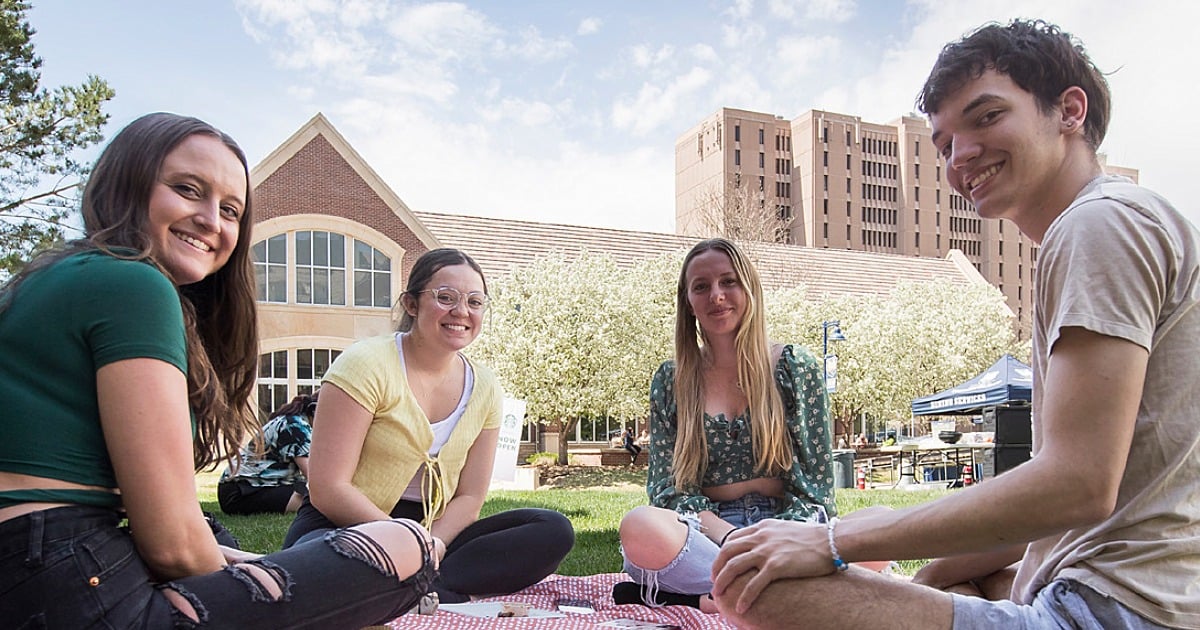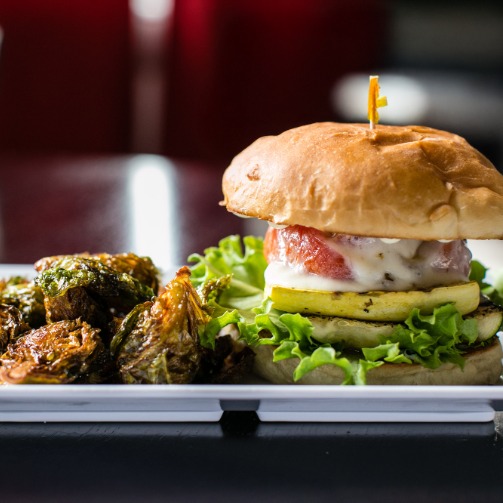Campus
Cultural Cuisine That Supports Belonging at UNC


We’ve all been there. We roll out of bed ready to take on the day, committed to making choices that will help us be our best selves. For some of us, we simply “pour ourselves a cup of ambition,” like Dolly. For others, we get off to a good start with a nutritious breakfast, and maybe even squeeze in a walk with our pups.
 Either way, realities of our hectic lives start to set in. Maybe we get stuck in traffic that causes us to run late, or we get an email about an urgent task at work that requires immediate attention. Perhaps that presentation we worked so hard on doesn’t go well, or we find ourselves on the receiving end of negative feedback. Or maybe our to-do list just feels especially overwhelming. Whatever the reason, the stress of daily life can quickly derail our good intentions and have us reaching for the comfort of food. We may start the day with an egg white omelet and fresh veggies to fuel our jog through the neighborhood, but end it with pizza and cookies while we binge our favorite TV show.
Either way, realities of our hectic lives start to set in. Maybe we get stuck in traffic that causes us to run late, or we get an email about an urgent task at work that requires immediate attention. Perhaps that presentation we worked so hard on doesn’t go well, or we find ourselves on the receiving end of negative feedback. Or maybe our to-do list just feels especially overwhelming. Whatever the reason, the stress of daily life can quickly derail our good intentions and have us reaching for the comfort of food. We may start the day with an egg white omelet and fresh veggies to fuel our jog through the neighborhood, but end it with pizza and cookies while we binge our favorite TV show.
If this struggle between intentions and behaviors is difficult for adults, it’s even harder for college students, who are still figuring out what they want while also learning how to navigate their newfound independence and life on campus. There is a fascinating dichotomy among college students: while they understand the need to eat healthy food and express a desire to do so, those sentiments are not always reflected in their actual choices. In fact, Sodexo’s 2024-2025 Student Lifestyle Survey found that although 92% of students recognize the importance of a healthy diet, only 21% actively prioritize making healthy food choices.
When we ask students about their dining preferences, “healthy options” are frequently listed as a top priority. Yet, the reality is that comfort foods — like burgers, fries, and pizza —consistently outperform healthier fare on campus. Today’s students are well-informed and know what’s best for them, but they struggle to follow through.
Although 92% of students recognize the importance of a healthy diet, only 21% actively prioritize making healthy food choices.
The reasons for this divergence between students’ intentions and behaviors can be complex. They may genuinely want to prioritize their health and wellness, but the stress of college life may drive them to seek the emotional comfort of familiar, indulgent foods. Plus, students’ moods and needs fluctuate; they might start the day prioritizing healthy meals and end it craving a burger and cheese fries. That’s perfectly normal, and it’s part of their evolving relationship with food.
As culinarians, my colleagues and I must often ask ourselves an important question: are we only making healthy food for wellness-focused students, those who follow strict diets and will always make nutritious choices? Could we instead innovate menus in a way that creates healthy options that expand students’ palates — and their ideas about what it means to eat well?
The key is balance. Campus dining programs must offer a spectrum — from healthy, nutrient-rich dishes to comforting, indulgent classics — and options that blur the line between the two.
Wellness shouldn’t be about excessive restrictions or strict rules. It should be an accessible, engaging, and integral part of campus life. The goal is to make wellness both approachable and enjoyable through a holistic, science-based strategy and menus full of diverse, flexible, and exciting options.
Campus chefs play a critical role in this regard, harnessing culinary creativity to transform healthy ingredients into delicious, craveable meals that students want to eat, without sacrificing the fun or social elements of dining — which is extremely important in a place students frequent every day, like a resident dining hall. Swapping ingredients or utilizing different cooking techniques can make a huge difference in creating healthier dishes without diminishing flavor or appeal. Imagine an Instagram-worthy burger where the bun is whole grain, toppings include options like avocado, and fries are replaced by crispy roasted Brussels sprouts. Candied pecans sprinkled into a salad can offer a little something sweet without a lot of added sugar. Replacing salt with zesty herbs and bold spices is a great way to add flavor but not sodium.
 That’s the focus of Sodexo’s Mindful program, which offers a holistic approach to wellness through strategic recipe development centered around healthy indulgence. Mindful dishes offer satisfying portions and incredible flavors, but with fewer calories, less sodium, and a more health-oriented nutritional profile. Currently, more than one-third of the dishes Sodexo serves in resident dining locations meet Mindful criteria.
That’s the focus of Sodexo’s Mindful program, which offers a holistic approach to wellness through strategic recipe development centered around healthy indulgence. Mindful dishes offer satisfying portions and incredible flavors, but with fewer calories, less sodium, and a more health-oriented nutritional profile. Currently, more than one-third of the dishes Sodexo serves in resident dining locations meet Mindful criteria.
Another great example is Sodexo’s commitment to plant-forward dining. Within our resident dining halls, every animal protein is served beside a delicious plant-based alternative. For campuses that want to take plant-forward dining to the next level, Foodprint Foodhall is a chef-driven dining destination that prioritizes flavor, creativity, and fun while highlighting plant-rich and carbon-conscious dishes. At this modern, vibrant food hall, students can enjoy comforting favorites, authentically inspired global cuisine, and exciting new flavors that make plant-rich dining approachable, relatable, and downright delectable.
Small adjustments like these make a big difference in nudging students toward better choices without making them feel deprived. These small changes can gradually shift campus food culture. Over time, students start to expect — and even prefer — healthier options alongside familiar favorites.
While we leverage culinary creativity to encourage students to make healthier decisions, it’s critical to ensure students feel empowered to make the choices that meet their needs at that moment. We never want students to feel forced to eat a certain way or deprived of what they want. Many students are learning to live independently for the first time, and learning how to manage their health is an important part of that. Sodexo’s menus feature highly customizable made-to-order dishes, giving students control and flexibility and supporting them no matter where they are on their wellness journey.
As a chef and lover of food, I understand the comfort that indulgent meals bring — especially during stressful times or moments of homesickness. Wellness is not about eliminating these experiences. It’s about finding a balance that respects both the desire to indulge and the need to prioritize health.
Ultimately, closing the gap between students’ intentions and their eating habits requires collaboration — between chefs, dining teams, campus leaders, and students themselves. By creating menus that are flexible, flavorful, and inclusive, empowering students to customize the things they eat, and offering guidance that respects students’ autonomy, we can help them build lifelong habits that support their well-being
Cultural Cuisine That Supports Belonging at UNC

Creating Connection Points & Strengthening Community

Confidence, Culture, and Connection: How Sodexo Helps Students Thrive Beyond the Classroom

Botrista: Meeting Student Demand for Craft Beverages on Campus
